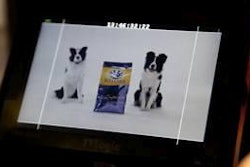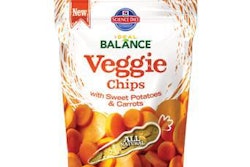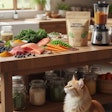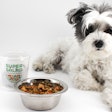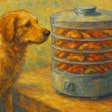
According to Packaged Facts’ US Pet Market Outlook, 2012–2013, despite any money-saving tradeoffs pet owners may be making, premium products remain a fact of life in the US pet market, as do premium product shoppers. As of 2010, US households earning US$70,000 or more account for 51% of the aggregate pet market expenditure and Packaged Facts believes these consumers are footing the lion’s share of the bill for premium pet products. Generally speaking, better-off pet owners are also more likely to have been less affected by the recession and to be recovering more quickly.
Pet owners’ desire for premium products influences their channel and brand choices. In Packaged Facts’ September 2011 Pet Owner Survey, close to one-third of pet product buyers (30%) agreed that “I prefer to shop at pet product retailers that offer the best products available, even if they are more expensive,” and almost one-quarter (23%) agreed that “I prefer to shop at pet product retailers that offer natural/organic and other specialty brand products.” Taken with the trend toward a more price-conscious shopper, these findings suggest growing polarization in the pet market—toward the upper and lower ends, and away from the middle.
Because there’s no set definition for “premium,” it’s difficult to say just how much of the market is premium, but Packaged Facts estimates that premium products account for approximately two-fifths of US pet product sales. In their March 2011 report, Pet Food in the US, 9th Edition, they calculated that 10% of the petfood sold in the US is “superpremium” (defined as priced 20% or more above the category average), while another 30% is “mass premium” (priced 10%–20% above the category average).
For several years, a trend known as “premiumization” has been driving much of the pet market growth. With pet ownership and overall US household growth rates modest at best, the market has been seeing little incremental growth overall, so the trick has been to drive dollar gains by converting pet owners to higher price products and services, says Packaged Facts. With the economic slowdown, however, pet owners have begun to look at product pricing more critically. For the first time, in their February 2011 Pet Owner Survey, Packaged Facts queried pet owners about product pricing, and a resounding 74% were in agreement that “many pet products are becoming too expensive,” with 35% in strong agreement.
Likely reflecting some recession-related scaling back, as of March 2012 most pet owners characterized their pet market spending as average. 52% of pet product buyers characterize the petfood they purchase as average priced, compared with 29% of petfood purchasers who view their purchases as overpriced, suggesting room for premium product growth.
US pet market growth is coming from higher-ticket sales of products as opposed to volume gains. Fueling this trend is a steady stream of superpremium products, with natural and organic products especially important on the petfood and treats side. In the petfood market, premium—and especially superpremium—are terms that increasingly also mean natural. Not all premium products are natural, but natural products are at the core of the premiumization trend, especially on the petfood side.
Demonstrating the superior performance of superpremium pet products in 2011, sales of pet products in natural supermarkets (excluding Whole Foods and Trader Joe’s) rose 5.2% during the 52 weeks ending October 29, 2011, to reach US$62.8 million, according to SPINSscan Natural data from SPINS Inc., a market research and consulting firm for the natural products industry. Driving most of this growth are gains in the much larger petfood category, which increased 5.2% (a US$2.8 million increase), spurred by strong sales of dog food (up 5.2%, or US$1.3 million) and by exceptionally strong sales of treats (up 12%, or US$1.1 million).
During 2010, sales of pet products in natural supermarket rose 4.1% to reach US$61.2 million. Once again, petfood drove most of the growth, rising 3.5% (US$1.8 million), reflecting treats’ 10% (US$0.9 million) increase and dog food’s 3% (US$0.7 million) gain. Within the natural supermarket channel, petfood accounts for 89% of the market.
Although pure-play pet pampering has not gone away, virtually all of the major players in the US pet products market are focusing more intensively on pet health as a legitimate means of justifying the higher prices of premium products. Participating companies include all of the largest marketers of petfood, as well as the thousands of smaller companies targeting market niches. The ongoing market investments of deep-pocketed pet market heavy hitters, as well as smaller entrepreneurs focused on pet health, promise to keep the US petfood market focused squarely on health for years to come, says Packaged Facts.

